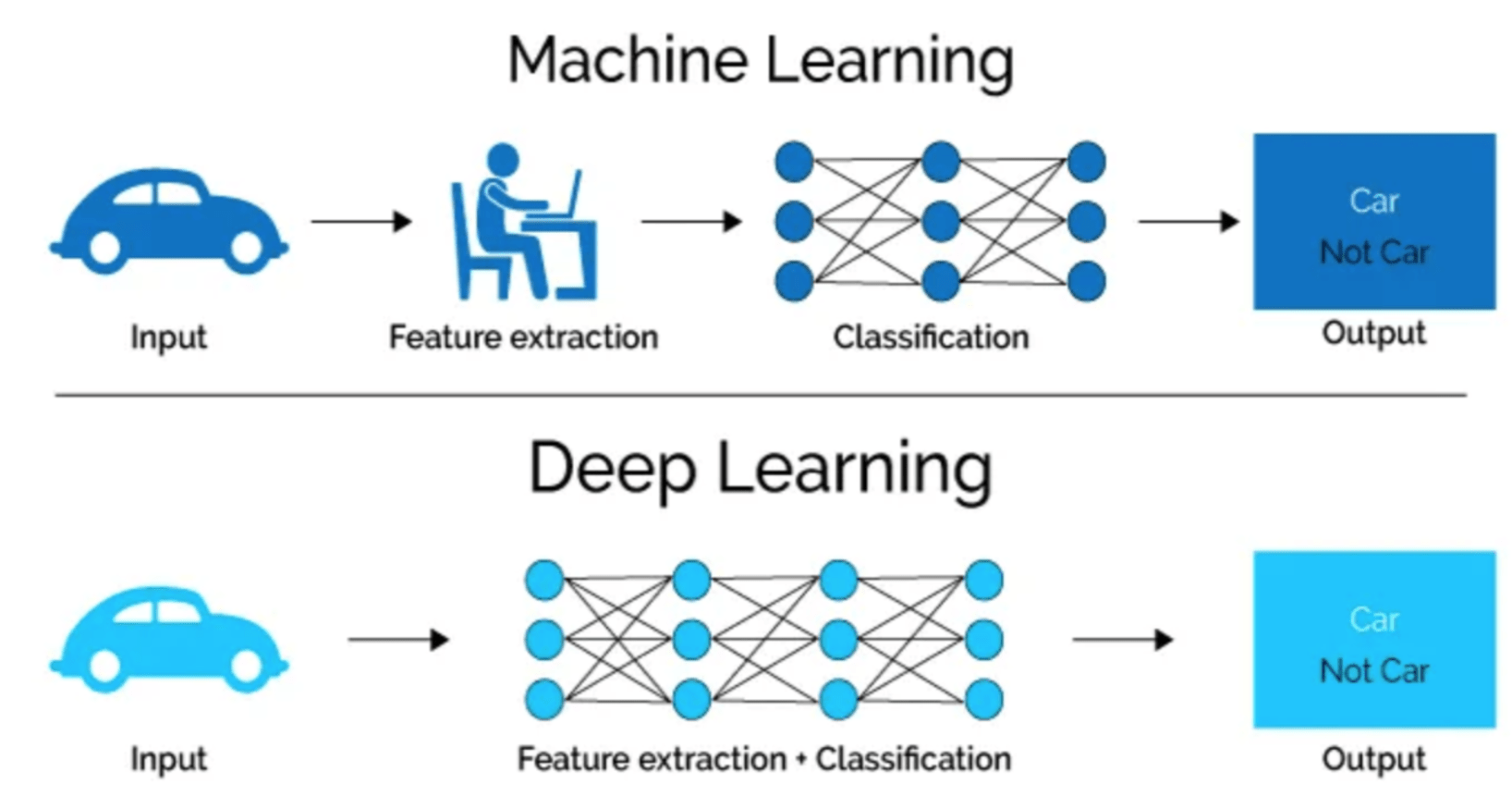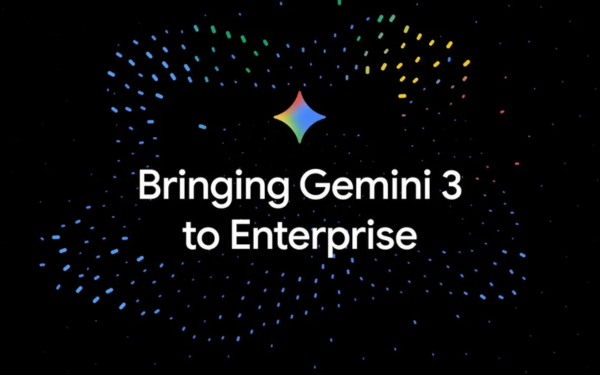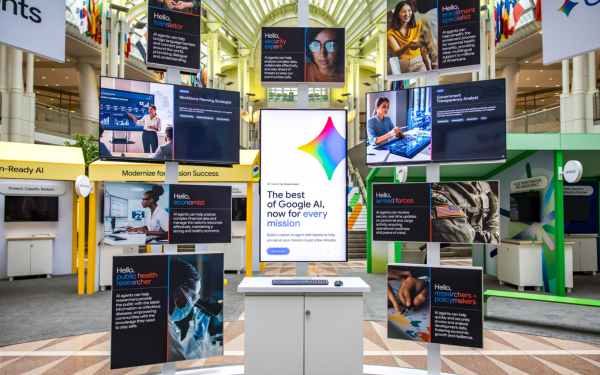What benefits does Deep Learning bring to businesses?
Deep learning là một chức năng của trí tuệ nhân tạo AI, có thể coi là một lĩnh vực nhỏ của Machine Learning (Học máy). Đây là lĩnh vực mà các máy tính sẽ tham gia vào một chương trình đào tạo và cải thiện chính bản thân nó thông qua các thuật toán.
“Deep Learning” Interpretation
Deep Learning is a subset of machine learning, which is essentially a neural network with three or more layers. These neural networks attempt to simulate the behavior of the human brain allowing deep learning to "learn" from large amounts of data. While a neural network with one layer can still make approximate predictions, additional hidden layers can help optimize and refine for accuracy.
Deep Learning leverages a variety of artificial intelligence (AI) applications and services that improve automation, performing analytical and physical tasks without human intervention.
When to use “Deep Learning”?
Businesses can use deep learning in many different scenarios, but the most common ones include:
- Big data analytics: Deep learning can help businesses understand and analyze big data from a variety of sources. In advertising, for example, deep learning can help analyze user data and generate predictions about their preferences and behavior.
- Image and video recognition: Deep learning can help businesses recognize images and videos automatically. For example, in the security field, deep learning can detect and identify suspicious objects in surveillance video.
- Natural language processing: Deep learning can help businesses process natural language automatically. For example, in the field of translation, deep learning can translate texts into other languages accurately and automatically.
- Augmented reality: Deep learning is a method of combining real and virtual information to create a new experience for users. In deep learning, augmented reality is used to create interactive images, video or audio between the real world and the virtual world. Deep learning is used to process and analyze information from images or videos collected from real-life environments. This information is then used to create virtual objects or additional information that is displayed directly in the actual environment through devices such as mobile phones, AR glasses or tablets.
The main information in the Deep learning algorithm
There are several gist in deep learning algorithms:
- Neural Networks: Deep learning uses artificial neural networks to create a complex information processing system. Neural networks are structured into many layers, with each layer consisting of many neuronal units. The neurons in the later layers receive information from the neurons of the previous layer to perform the learning process.
- Deep Learning (Deep Learning): The main idea of deep learning is to use many hidden layers in neural networks to increase information processing capacity and achieve higher performance. Each hidden layer in a deep learning neural network learns more complex and abstract components.
- Unsupervised Learning: Deep learning can also use unsupervised learning to learn hidden features and structures in data without labels. This method helps deep learning algorithms automatically discover and learn from data without human intervention.
- Optimization through backpropagation: Deep learning often uses an optimization method called backpropagation to adjust the weights of the neural network based on the error of the output relative to the desired result. This process happens in reverse from the output layer to the input layer and uses methods such as derivative and gradient descent to optimize the neural network.
Advantages of using Deep learning compared to traditional machine learning methods
Automate features
One of the advantages of using deep learning is the ability to automate features, specifically deep learning algorithms can generate new features from a limited number of features right in the training data without having to worry about it. need human intervention.
That means deep learning can perform complex tasks with high technical requirements with extensive features. For businesses, the advantage of automating deep learning features enables faster, more stable, and accurate technology or application deployment.

Good compatibility with unstructured data types
The biggest advantage of deep learning is its ability to work well with unstructured data. This is especially relevant when much of today's business data is unstructured. Image, text, and voice are arguably the most common data formats used by businesses.
Unlike deep learning, classical machine learning algorithms are limited in their ability to analyze unstructured data, which means that this amount of information is not often mined. However, deep learning will have the biggest impact on unstructured data.
Training deep learning networks with unstructured data and proper labeling will help businesses optimize everything from sales to marketing to finance.
Cost optimization
Although training deep learning models can be expensive, but if properly trained, deep learning will help businesses optimize unnecessary spending. In industries like manufacturing, consulting or even retail, the cost of an incorrect prediction or product defect is enormous. It is usually larger than the cost of training a deep learning model.
Deep learning algorithms can generate variation between learning features to reduce the error rate significantly across disciplines. This is especially true when you compare the limitations of classical machine learning models with deep learning algorithms.
Advanced Analytics
Deep learning, when applied to data, can produce better and more efficient processing models. Monitorable deep learning helps drive continuous improvement, resulting in high accuracy and results. It also provides data scientists with more concise and reliable analysis results.
This technology powers most of today's predictive software with applications ranging from marketing to sales, human resources, finance, etc. Same as sales automation and marketing intelligence also uses algorithms. deep learning algorithms to make predictions based on historical data.
Extensibility
Deep learning is highly scalable due to its ability to process large amounts of data and perform many calculations that give the best results, optimizing cost and time. This directly affects productivity, modularity, and portability.
Application of Deep Learning
Deep Learning has high applicability in life, specifically:
High-tech industry
The outstanding application of Deep Learning that cannot be ignored is the construction of Robots. Currently, human-like versions of robots with the ability to sense and react to the environment are gradually being born.
Robots can now cooperate with human activities and they can perform specific tasks to their strengths. Robots are replacing humans in performing more difficult jobs. This is a great invention thanks to the application of Deep Learning.
Agriculture industry
Now, thanks to Deep Learning, farmers can deploy devices that can distinguish weeds from crops. From there, the herbicide spraying machines can selectively spray on the weeds to ensure that the crops are not affected.
Electronics
Deep Learning is applied to faceless recognition work in electronic devices such as phones, software such as facebook, messenger, etc. In addition, Deep Learning is also used in translation and automatic speech that websites google translate is in use.
Conclusion
To use Deep Learning It takes a lot of data and computational resources to give the best accuracy, so this optimization requires the modeler to have a deep understanding and experience. It can be seen that Deep Learning has high applicability in life, maximum human support, this is a modern technology that is applied to many practical problems of machines and the overall fields of artificial intelligence. create. A technological solution that disrupts the way humans work by enhancing the capabilities of all machines to closely resemble humans.
Source: Gimasys



